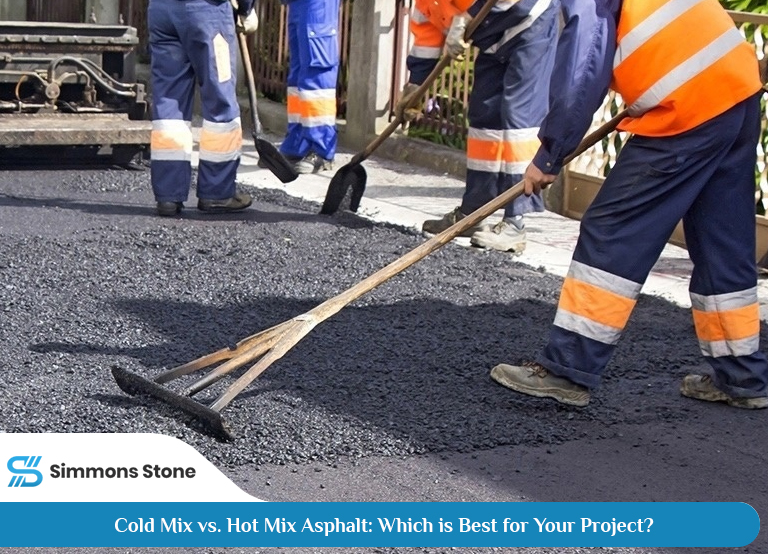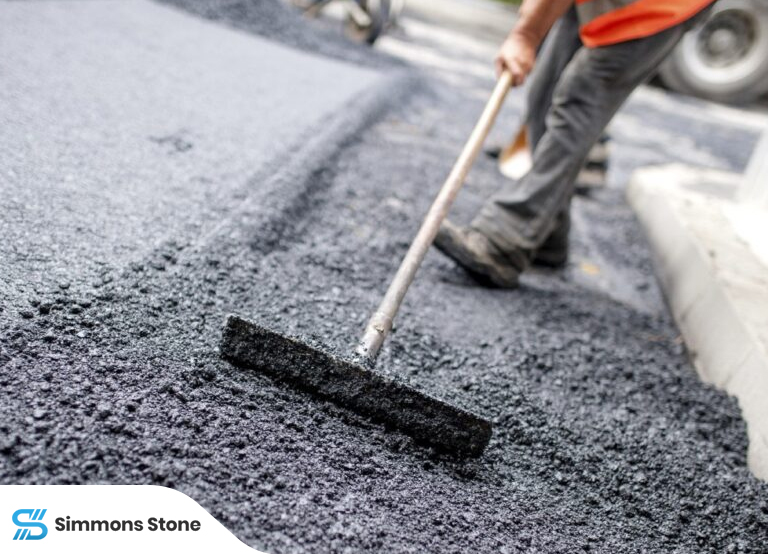Cold Mix vs. Hot Mix Asphalt: Which is Best for Your Project?
Choosing the right type of asphalt is crucial for building roads, driveways, and parking lots. Two common types are cold mix and hot mix asphalt. Understanding their differences helps in making the best choice for your project.
What is Cold Mix Asphalt?
Cold mix asphalt combines asphalt binder with aggregate at normal temperatures. It does not require heating before application. Cold mix asphalt proves easy to produce and use, especially in colder weather.
Cold mix asphalt serves for temporary repairs. It fills potholes and cracks effectively. Workers apply it directly to the damaged area without needing to heat it up. It offers easy storage for longer periods, making it handy for quick fixes.
Benefits of Cold Mix Asphalt
Cold mix asphalt offers convenience and ease of use. It saves time and energy because it does not need heating. Workers can use it immediately, which benefits emergency repairs. It costs less than hot mix asphalt, making it suitable for small projects and repairs.
Moreover, cold mix asphalt benefits the environment. It uses recycled materials, reducing waste. Its production process releases fewer pollutants, contributing to a cleaner environment.
Limitations of Cold Mix Asphalt
Although cold mix asphalt is versatile, it shows some limitations. It lacks the durability of hot mix asphalt. Over time, it breaks down and needs replacement more often. High-traffic areas or permanent road construction do not suit cold mix asphalt.
Cold mix asphalt takes longer to set. Sometimes, it remains soft for a while, making it unsuitable for immediate use in heavy traffic zones.
What is Hot Mix Asphalt?
Hot mix asphalt heats asphalt binder and aggregate to high temperatures. This process makes the mixture sticky and easy to spread. Workers apply it to the road surface while still hot. It hardens upon cooling and forms a strong, durable surface.
Hot mix asphalt serves for major construction projects. It suits building new roads, highways, and large parking lots. It provides a smooth, long-lasting surface that handles heavy traffic effectively.
Benefits of Hot Mix Asphalt
Hot mix asphalt proves strong and durable. It withstands heavy traffic and harsh weather conditions. Once it sets, it forms a tough surface that lasts many years. This makes it the preferred choice for permanent road construction and high-traffic areas.
Hot mix asphalt provides a smooth surface. This feature enhances driving comfort and safety. It reduces noise and ensures a safer travel experience.
Limitations of Hot Mix Asphalt
Despite its many benefits, hot mix asphalt shows some limitations. Heating before application consumes time and energy. This makes it inconvenient for quick repairs. It costs more than cold mix asphalt, making it less suitable for small projects.
Hot mix asphalt requires immediate use. It hardens upon cooling and cannot be reused. Quick transportation and application become necessary, which presents challenges in some situations.
Which is Best for Your Project?
Choosing between cold mix and hot mix asphalt depends on your project needs. For a quick, temporary fix, cold mix asphalt provides a good choice. It offers ease of use and cost-effectiveness for small repairs. It benefits environmentally-conscious projects.
For building new roads or creating a durable surface, hot mix asphalt stands as the better option. It provides a strong, long-lasting surface capable of handling heavy traffic. Its smooth finish suits major construction projects.
Factors to Consider
When deciding on which type of asphalt to use, consider the following factors:
- Project size: Small repairs suffice with cold mix asphalt. Large construction projects require hot mix asphalt.
- Traffic load: High-traffic areas demand the durability of hot mix asphalt. Low-traffic zones or temporary fixes suit cold mix asphalt.
- Weather conditions: Cold mix asphalt functions well in colder weather. Hot mix asphalt requires warmer temperatures for application.
- Budget: Cold mix asphalt fits budget-conscious projects. Hot mix asphalt, though more expensive, offers long-term savings due to its durability.
Both cold mix and hot mix asphalt offer their own advantages and uses. Cold mix asphalt provides convenience and cost-effectiveness for small repairs and quick fixes. Hot mix asphalt ensures durability and suits major construction projects. Understanding the differences aids in choosing the best option for your project. Consider the project size, traffic load, weather conditions, and budget when making your decision. This ensures you choose the right asphalt mix for your needs.
FAQ
How is hot mix asphalt made?
Hot mix asphalt heats asphalt binder and aggregate to high temperatures. This process makes the mixture sticky and easy to spread. Workers apply it to the road surface while still hot. It hardens upon cooling and forms a strong, durable surface. Hot mix asphalt serves for major construction projects, such as building new roads and highways.
What are the benefits of using cold mix asphalt?
Cold mix asphalt offers convenience and ease of use. It does not need heating, which saves time and energy. It costs less than hot mix asphalt, making it suitable for small projects and repairs. Additionally, cold mix asphalt benefits the environment. It uses recycled materials, reducing waste.
Why is hot mix asphalt preferred for high-traffic areas?
Hot mix asphalt offers durability for high-traffic areas. It withstands heavy traffic and harsh weather conditions. Once it sets, it forms a tough surface that lasts many years. This makes it ideal for permanent road construction and high-traffic zones. The smooth surface it provides enhances driving comfort and safety.
Can cold mix asphalt be used for major construction projects?
Cold mix asphalt does not suit major construction projects typically. It lacks the durability of hot mix asphalt and needs replacement more often. Temporary repairs and low-traffic areas suit cold mix asphalt better. For major construction projects, hot mix asphalt serves as the preferred choice due to its strength and longevity.
